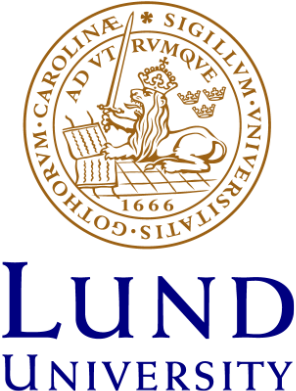Search results
Filter
Filetype
Your search for "coins for fc 26 Visit Buyfc26coins.com for latest FC 26 coins news..WF0R" yielded 85098 hits
Pool boiling heat transfer of FC-72 on pin-fin silicon surfaces with nanoparticle deposition
In the present study, two types of micro-pin–fin configurations were fabricated on silicon surfaces by a dry etching method, i.e., staggered pin fins (#1) and aligned pin fins with empty areas (#2). The micro-pin–fin surfaces were then further modified by depositing FeMn oxide nanoparticles (∼35 nm) electrostatically for 8 h and 16 h, respectively, namely #1-8h, #1-16h, #2-8h and #2-16h. Subcooled
The Functional Polymorphism 844 A>G in Fc{alpha}RI (CD89) Does Not Contribute to Systemic Sclerosis or Rheumatoid Arthritis Susceptibility.
Identification of the site on IgG Fc for interaction with streptococci of groups A, C and G
Absence of host-cell influence on binding specificity of herpes simplex virus type 1 induced Fc receptor
Interaction between herpes simplex type 1-induced Fc receptor and human and rabbit immunoglobulin G (IgG) domains
Studies of protein A and herpes simplex virus-1 induced Fc gamma-binding specificities. Different binding patterns for IgG3 from Caucasian and Oriental subjects
Human immunoglobulin class and subclass specificity of Fc receptors induced by herpes simplex virus type 1
Biological and structural characterization of murine TRALI antibody reveals increased Fc-mediated complement activation
Transfusion-related acute lung injury (TRALI) remains a leading cause of transfusionrelated deaths. In most cases, anti-leukocyte antibodies in the transfusion product trigger TRALI, but not all anti-leukocyte antibodies cause TRALI. It has been shown that the anti-major histocompatibility complex (MHC) class I antibody 34-1-2S (anti-H-2Kd) causes TRALI in BALB/c mice (MHC class I haplotype H-2Kd)
Fractionation of rat IgG subclasses and screening for IgG Fc-binding to bacteria
Binding of human and animal immunoglobulins to the IgG Fc receptor induced by human cytomegalovirus
Specificity of Fc receptors induced by herpes simplex virus type 1: comparison of immunoglobulin G from different animal species
Intraventricular Infusion of TrkB-Fc Fusion Protein Promotes Ischemia-Induced Neurogenesis in Adult Rat Dentate Gyrus.
Background and Purpose-We have previously shown that delivery of brain-derived neurotrophic factor (BDNF) through direct intrahippocampal gene transduction with a viral vector suppresses the formation of new dentate granule cells triggered by global forebrain ischemia. Here, we investigated whether inhibition of endogenous BDNF alters ischemia-induced neurogenesis in the dentate gyrus. Methods-Rat
False positive results in class-specific rheumatoid factor (RF) assays due to interaction between RF and Fc fragments of anti-immunoglobulin indicator reagents
Characterization of herpes simplex virus type 1-induced Fc receptor in its interaction with rabbit immunoglobulin G (IgG)
Internalization of secreted antigen-targeted antibodies by the neonatal Fc receptor for precision imaging of the androgen receptor axis
Targeting the androgen receptor (AR) pathway prolongs survival in patients with prostate cancer, but resistance rapidly develops. Understanding this resistance is confounded by a lack of noninvasive means to assess AR activity in vivo. We report intracellular accumulation of a secreted antigen-targeted antibody (SATA) that can be used to characterize disease, guide therapy, and monitor response. A
Fv structure of monoclonal antibody II-481 against herpes simplex virus Fc gamma-binding glycoprotein gE contains immunodominant complementarity determining region epitopes that react with human immunoglobulin M rheumatoid factors
Streptococcal beta protein has separate binding sites for human factor H and IgA-Fc.
EndoS and EndoS2 hydrolyze Fc-glycans on therapeutic antibodies with different glycoform selectivity and can be used for rapid quantification of high-mannose glycans.
Enzymes that affect glycoproteins of the human immune system, and thereby modulate defense responses, are abundant among bacterial pathogens. Two endoglycosidases from the human pathogen Streptococcus pyogenes, EndoS and EndoS2, have recently been shown to hydrolyze N-linked glycans of human IgG. However, detailed characterization and comparison of the hydrolyzing activities have not been performe
The hinge-engineered IgG1-IgG3 hybrid subclass IgGh47 potently enhances Fc-mediated function of anti-streptococcal and SARS-CoV-2 antibodies
Streptococcus pyogenes can cause invasive disease with high mortality despite adequate antibiotic treatments. To address this unmet need, we have previously generated an opsonic IgG1 monoclonal antibody, Ab25, targeting the bacterial M protein. Here, we engineer the IgG2-4 subclasses of Ab25. Despite having reduced binding, the IgG3 version promotes stronger phagocytosis of bacteria. Using atomic
